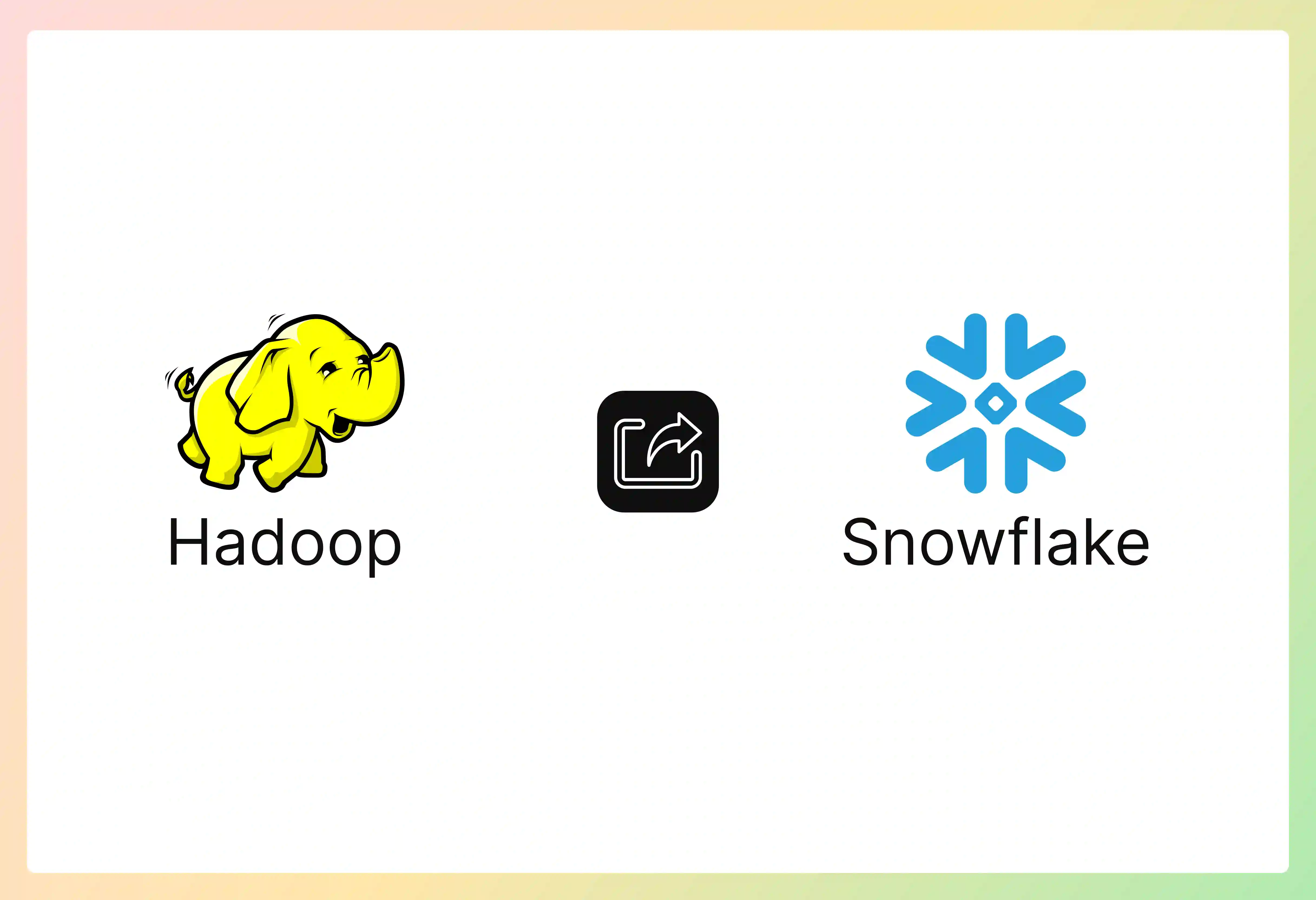


Are you still holding back with Hadoop clusters? Hadoop, once used for large-scale data processing, is now consuming resources that are draining the budget and wasting time. Companies are shifting towards cloud-native platforms, such as Snowflake, which offer increased speed and automation.
Snowflake’s managed architecture and low-cost storage have made it ideal for modern analytics platforms. Hadoop to Snowflake migration eliminates the infrastructure bottlenecks and turns its focus on insights instead of administration.
This blog outlines the detailed steps for migrating Hadoop to Snowflake in today’s data-driven environment.
Hadoop has served as Big Data. It uses the Hadoop Distributed File System (HDFS) and stores the data on-premises by breaking it into smaller sets. Hadoop platforms have not achieved business value and suffer from high maintenance costs, poor performance, and a lack of advanced data science capabilities. So enterprises are looking to transition to more reliable cloud-based platforms. Snowflake offers the following benefits.
For a successful Hadoop to Snowflake migration, we need to consider the following critical areas.
A successful migration requires thorough planning, goal setting, and a migration strategy. Addressing the steps below will help you avoid errors and achieve performance when moving to a new base.
This is the foundational step for the Hadoop to Snowflake migration. Analyze the current Hadoop environment and document existing data sources, ETL processes, analytical queries, reporting tools, HDFS storage, Hive table structure, and integrations. Assess workloads to determine critical data assets and prioritize them for migration. Create a roadmap with a detailed migration plan, timelines, budget, roles, and milestones that cover schema, data, and application migration. Find out which data or workloads are to be first. This prioritization manages complexity and reduces migration risks.
Set up the Snowflake accounts, users, roles, virtual warehouses, and cloud storage locations. Create cloud storage integration to stage data. Establish a snowpipe or other ingestion pipeline for automated data loading. Ensure that access controls, roles, and permissions, and governance standards are compliant from the start.
Start by extracting the metadata from Hive metastore that includes tables, views, columns, and partitions. Translate this into Snowflake-compatible DDL. This may involve manual conversion for complex structures or utilizing tools for automated translation. Create necessary tables, views, and database objects in Snowflake based on DDL.
Upload extracted files into cloud storage. This staging area acts as a bridge between Hadoop and Snowflake. Organize files based on schemas and workloads.
Use Snowflake’s data loading tools, such as the COPY command, Snowpipe, or ETL platforms. Load data into Snowflake tables via bulk loads or Snowpipe continuous ingestion.
Specific jobs of Hadoop, such as MapReduce logic, Hive scripts, and Spark transformation, require redesign. Rewrite them using Snowflake SQL or try to replace them with ETL tools.
Now it is time to convert the Hive SQL queries and ETL scripts into compatible Snowflake SQL. Manually or use automated tools to translate HiveQL scripts to SnowSQL. Rewrite data processing jobs, stored procedures, and the dbt tool for transformations.
Thoroughly do rigorous testing to ensure data accuracy and consistency between Hadoop and Snowflake. Validate the functionality and performance of migrated workloads.
Some post-migration steps to be considered are
Migration is not about transferring data; it is about reliability and performance. Our team at Entrans specializes in migrating from Hadoop to Snowflake services. Our team of experts is dedicated to ensuring security and transparency with a proven track record.
Entrans comes with a wide range of engineers specialized in migration skill sets. Our specialists have a wide knowledge and are well-versed in both Hadoop and Snowflake. We manage the whole process for you by securely moving your content to the cloud platform.
If you are planning a Hadoop to Snowflake migration, our team is here to support and ensure a smooth and efficient transition. Want to know more about it? Book a free consultation call!
Hadoop to Snowflake migration is the process of moving an organization’s big data infrastructure, including data, schemas, ELT/ETL pipelines, and workloads, to the cloud-native Snowflake data cloud. This migration modernizes data management with scalable compute and simplified operations.
A typical Hadoop to Snowflake migration takes 3 to 12 months. Migration depends on project complexity, data volume, and the level of automation used. Larger enterprises with complex data needs more time for the Hadoop to Snowflake migration.
Key challenges to be addressed during the Hadoop to Snowflake migration are schema conversion, query rewriting, pipeline modernization, and handling large or unstructured datasets.
Tools that help with Hadoop to Snowflake migration are Snowflake’s native utilities and third-party migration accelerators. ETL tools like Fivetran, Matailio, or dbt are used to rebuild data pipelines.
Lorem ipsum dolor sit amet, consectetur adipiscing elit, sed do eiusmod tempor incididunt ut labore et dolore magna aliqua. Ut enim ad minim veniam, quis nostrud exercitation ullamco laboris nisi ut aliquip ex ea commodo consequat. Duis aute irure dolor in reprehenderit in voluptate velit esse cillum dolore eu fugiat nulla pariatur.
Block quote
Ordered list
Unordered list
Bold text
Emphasis
Superscript
Subscript







